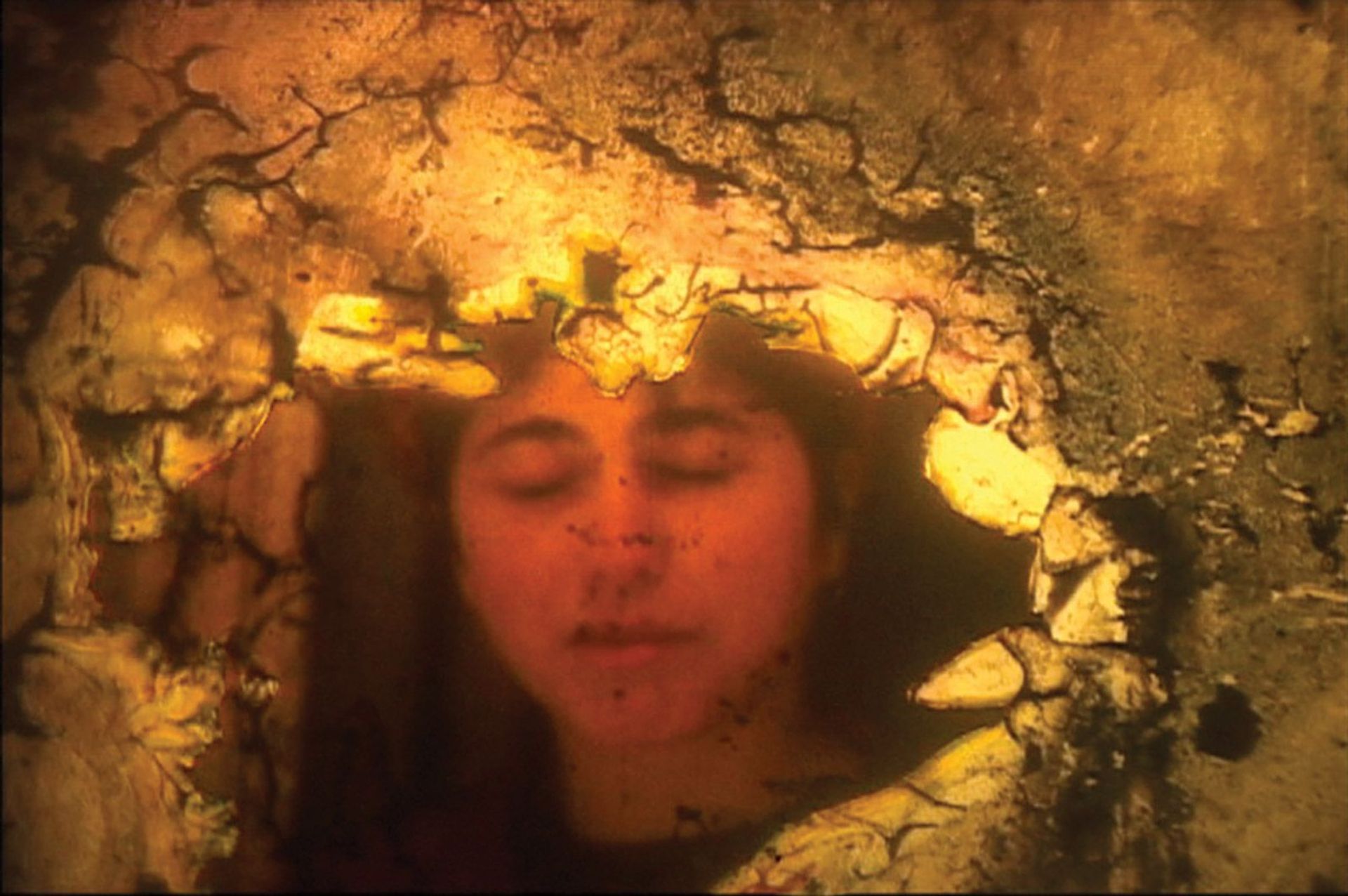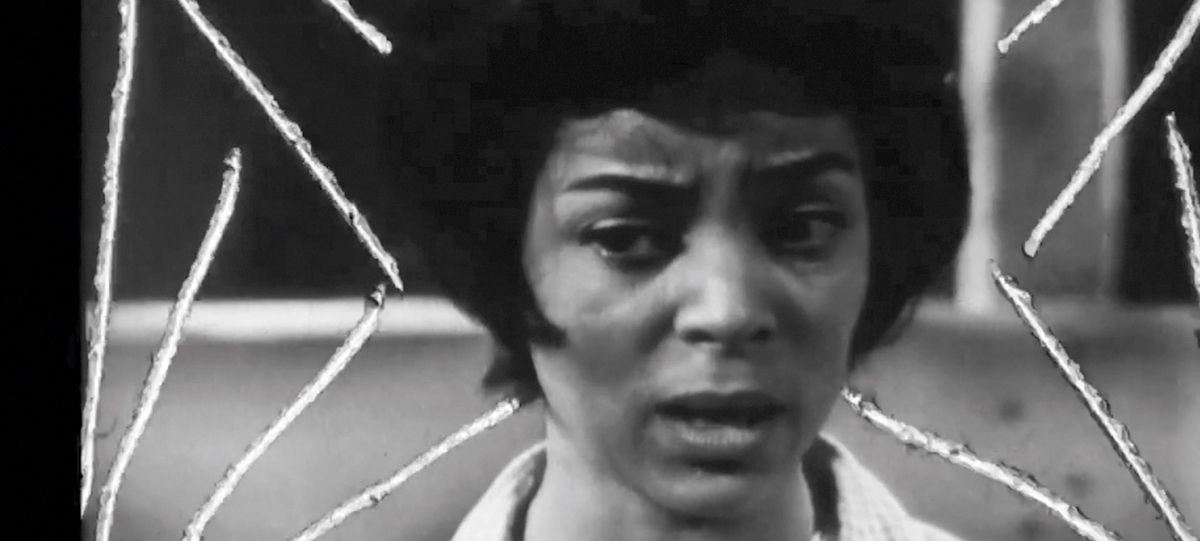Red and yellow dots swirl across the screen. Brown painted figures bob up and down to Lord Beginner’s Victory Test Match calypso. Gravel scatters over a girl swimming in an idyllic-looking ocean. This is the world of the “handmade film”: the visual pieces made by drawing, painting, scratching and otherwise messing about with the surface of the film celluloid itself. These films—often eye-popping, brain-frazzling and usually very short—have formed a staple part of the wider experimental film world since the 1930s. The big early names are people like Len Lye, Norman McLaren, Margaret Tait and Stan Brakhage; more recent practitioners include Jennifer West, Kelly Gallagher, Ja’Tovia Gary and Louise Bourque.
Examples of all their work can be seen in Splash, Scratch, Dunk!, a three-strong set of screenings at London’s Barbican Centre, as a sidebar to Brutal Beauty, the Jean Dubuffet survey. Splash, Scratch, Dunk! curator Tamara Anderson says it is Dubuffet’s “rebellious philosophy” and “spirit of experimentation and provocation” that prompted her to put the programme together. Anderson defines this work as, essentially, films made without a camera: a physical process where “film-makers have drawn, painted or scratched directly onto film; fixed materials to the filmstrip; or purposefully decayed the film stock in some way”. It’s easy to see, in this context, how these films sit much closer to visual arts on the creative spectrum than to the demands of mainstream film production.
When you digitise a piece of film, you freeze that moment in time, but the film continues to degrade. That’s a bigger existential ideaJennifer West, film-maker
The results are dazzlingly varied. A Colour Box, the groundbreaking three-minute film Lye made for the General Post Office in 1935, saw the film-maker paint continuous patterns on film stock. Mothlight (1963), Brakhage’s best known film, was created by pressing translucent organic matter—insect wings, petals, grass stems—between two strips of film. Bourque’s Self Portrait Post Mortem (2002) reflects on ageing and mortality using footage of herself that had been buried for five years. West’s Pink Beach Red Desert Dream Sand Film (2017) cuts up and reorders a famous scene in Michelangelo Antonioni’s 1964 Italian new-wave classic Il Deserto Rosso, as well as slathering the footage in material from the location where it was originally filmed.

Self Portrait Post Mortem (2002) by Louise Bourque, uses footage that the artist buried for five years in her back garden © Louise Bourque, courtesy Barbican Centre
Analogue art form
The form’s roots go back to the earliest days of moving image: film strips were dyed and coloured in the 1890s, first to deter piracy, then to add emotional depth to individual scenes. A 45-second film of dancer Annabelle Moore, produced by the Edison Manufacturing Company in 1895, is reputedly the first ever hand-tinted film. Subsequent experiments by Futurist artists Arnaldo Ginna and Bruno Corra are now lost. In his 1926 short Emak-Bakia, Man Ray collated dozens of avant-garde styles, including non-camera light effects. A Colour Box is reckoned to be the first fully handmade film to reach cinemas in 1935. (A subsequent screening at the Venice film festival was barracked by Nazis in the audience.)
Handmade films—or “drawn on film animation” as they are more formally known—are an unquestionably analogue art form: they wouldn’t exist without the celluloid film strips in the first place. So it’s a good question as to how they have survived the moving image’s wholesale switch to digital.
West, with dozens of handmade films behind her, all of which have involved stages of digital processing, says that, for her, it adds an extra dimension. “You know, film shows age. That’s one of the things that’s really interesting to me: when you digitise a piece of film, you freeze that moment in time, but the film continues to degrade. That’s a bigger existential idea. You’ve preserved it at this one moment, similar to a photograph. I’m really interested in the transference of those things into digital space.”
Chance-based editing
West’s work demonstrates how the handmade film has moved on from its early years, in parallel with currents in wider visual arts culture: where the form originally concerned itself with abstract pattern-making and innovative imagery, it’s now, in West’s words, “really linked to conceptual art, ultimately, and process-based work”. In the past, West has soaked film in urine, maple syrup, breast milk and liquid LSD; dumped it in the La Brea tar pits of Los Angeles; and asked skateboarders to skate over it.
She talks through the elaborate thinking behind Pink Beach, which started out with an invitation to stage a show in Sardinia and discovering that Antonioni had filmed a scene from one of her favourite films on a nearby island—followed by obtaining a print of the film from a Russian auction website. Having been dragged through sand, the footage was digitised and then subjected to a “chance-based editing process”, as West describes it. “It’s just this uncanny idea,” she says, “which I had been working with a lot, which has to do with movie memory. When you go to a site, and you have this previous memory of it through cinema or through television, it’s a kind of double memory.”
Exactly where these films are screened is also part of the equation of determining their cultural status. West would normally show her films in a gallery, but Pink Beach works as a “cinematic experience”, she says, “whereas with some of my other films, people would just throw rotten tomatoes”. Anderson says she is keen to get them into the focused environment of a cinema. “It is interesting to have the audience immerse themselves in these films on a big screen, in the dark room of a cinema, rather than in a fluid gallery space. After the year we’ve had, squinting at laptops and tellies, my hope is people will find this jolt of colour on the big screen joyful and invigorating.”
• Splash, Scratch, Dunk! Films Made by Hand, Barbican Centre, London, 8 July-5 August


